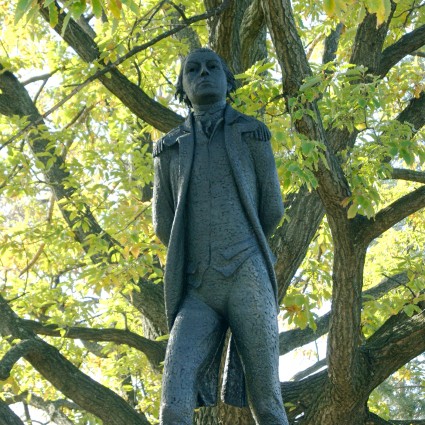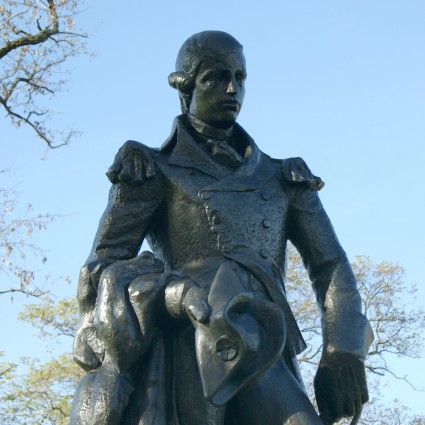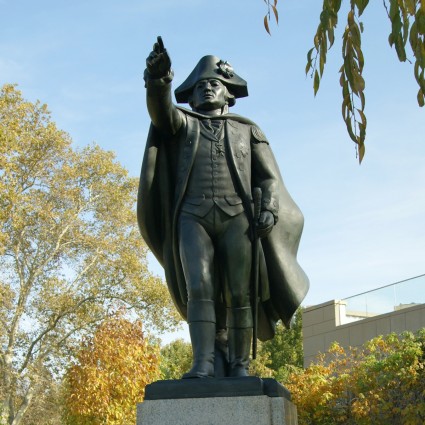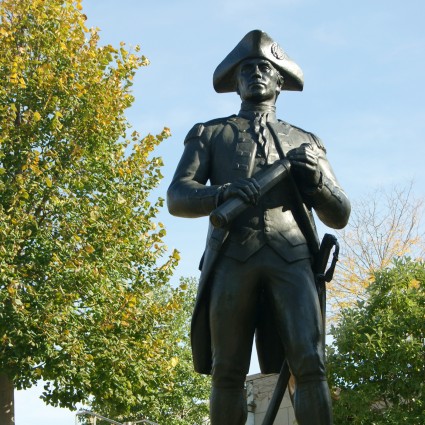At A Glance
Commissioned as part of the William M. Reilly Memorial
General Casimir Pulaski was a Polish nobleman who served under George Washington
He was sent to fight in the South during the American Revolutionary War and was killed during the siege of Savannah
Artist Sidney Waugh was a decorated World War II veteran, known for his architectural sculpture and friezes
Opposite the Montgomery monument in the William M. Reilly Memorial is a stern, sword-wielding portrait of General Casimir Pulaski, a Polish nobleman who served under George Washington during the American Revolutionary War. After distinguishing himself in the Battle of Brandywine, Pulaski set up an independent cavalry corps, Pulaski’s Legion, in Baltimore. The corps was sent to fight in the South, where Pulaski was killed during the siege of Savannah. The sculptor, Sidney Waugh, was himself a much-decorated veteran of World War II. As an artist, Waugh was known for his architectural sculpture on Federal buildings in Washington D.C., and his friezes on the Buhl Planetarium in Pittsburgh.
William M. Reilly Memorial
In his will of 1890, General William M. Reilly of the Pennsylvania National Guard established a trust fund for the purpose of creating monuments to Revolutionary War heroes. The earnings were to accumulate until the fund became large enough for the memorial to be realized. In 1938, when the fund reached the necessary level, the trustees set the project in motion, and four bronze statues were installed by 1947. Although Reilly had requested a site near Independence Hall, the larger-than-life figures were placed instead on the terrace northwest of the Art Museum. C. Louis Borie, Jr., one of the architects of the museum itself, designed the granite bases.
As specified in the will, these first four sculptures commemorated Montgomery, Pulaski, von Steuben, and Lafayette, volunteers from other lands who “threw themselves into the cause of emancipating the colonies from the yoke of British tyranny.” In addition to honoring their achievements, General Reilly wrote, the memorial would express “appreciation and gratitude to the lands which gave these liberty-loving men their birth.”
By the terms of the will, funds remaining after the erection of the four original monuments were to be applied to other statues of Revolutionary heroes. Accordingly the trustees commissioned bronze figures of John Paul Jones and Nathanael Greene, which were installed in 1957 and 1961, respectively. The six sculptures are arranged in two facing rows.
Adapted from Public Art in Philadelphia by Penny Balkin Bach (Temple University Press, Philadelphia, 1992).
RESOURCES:



